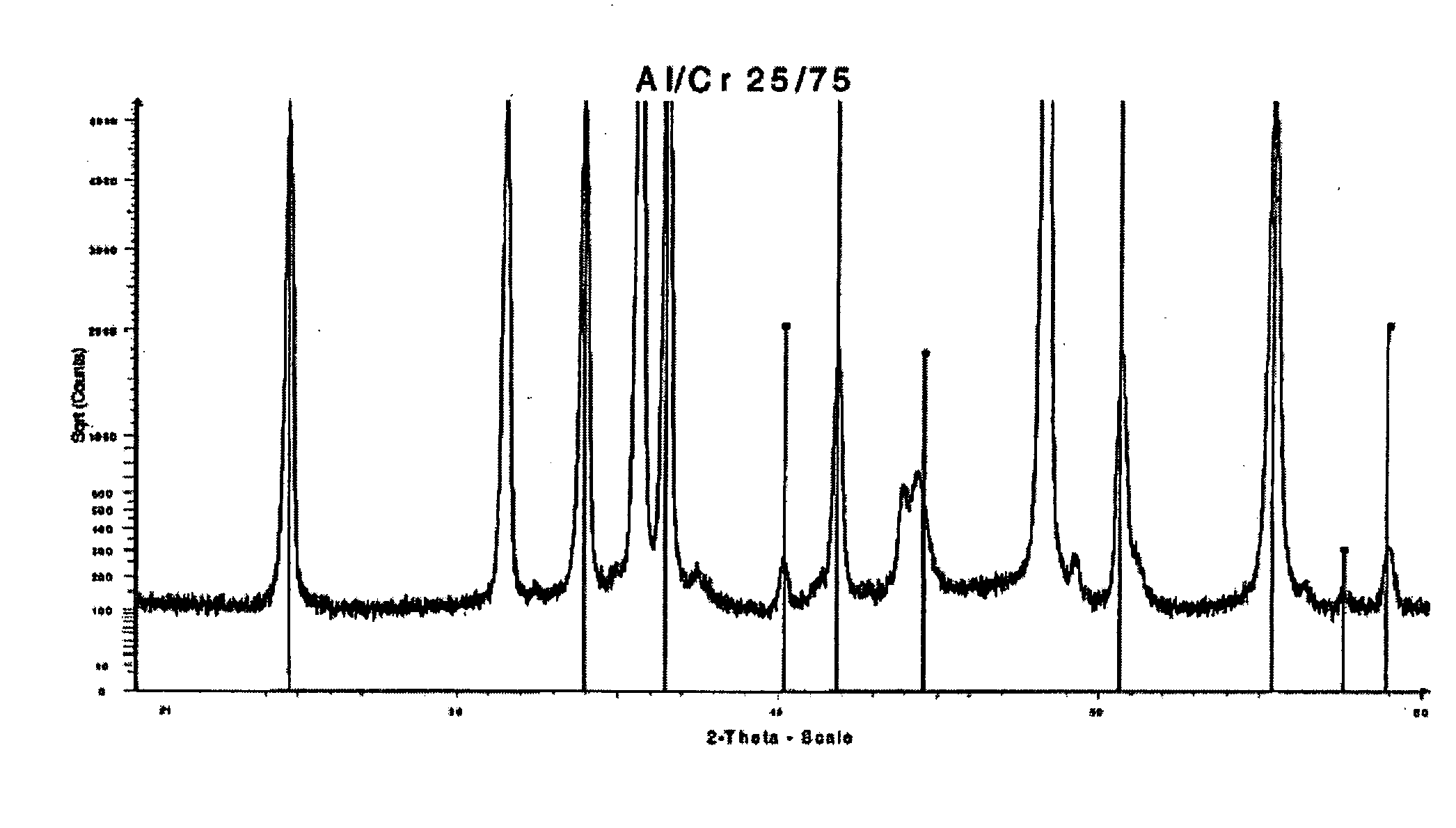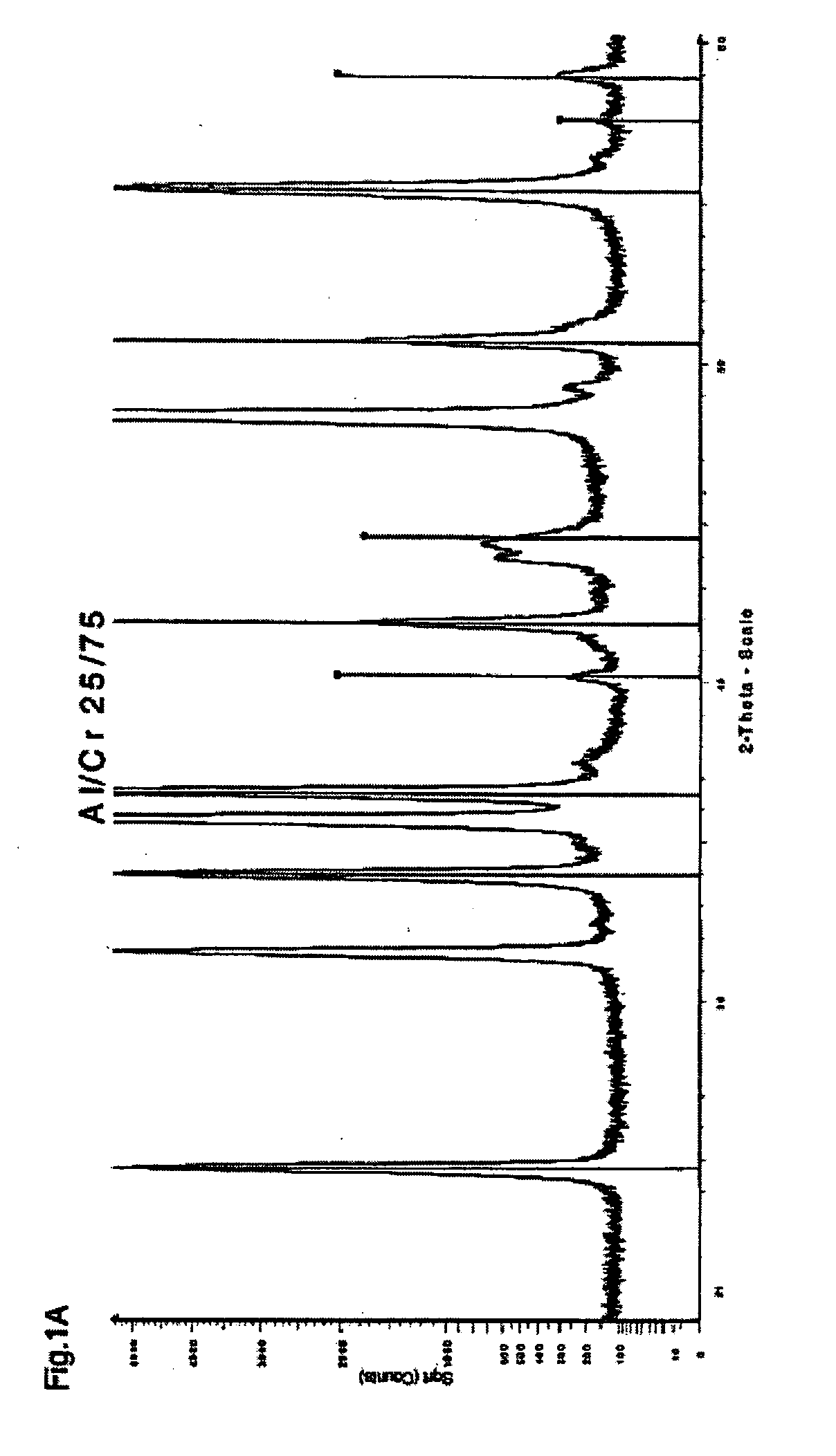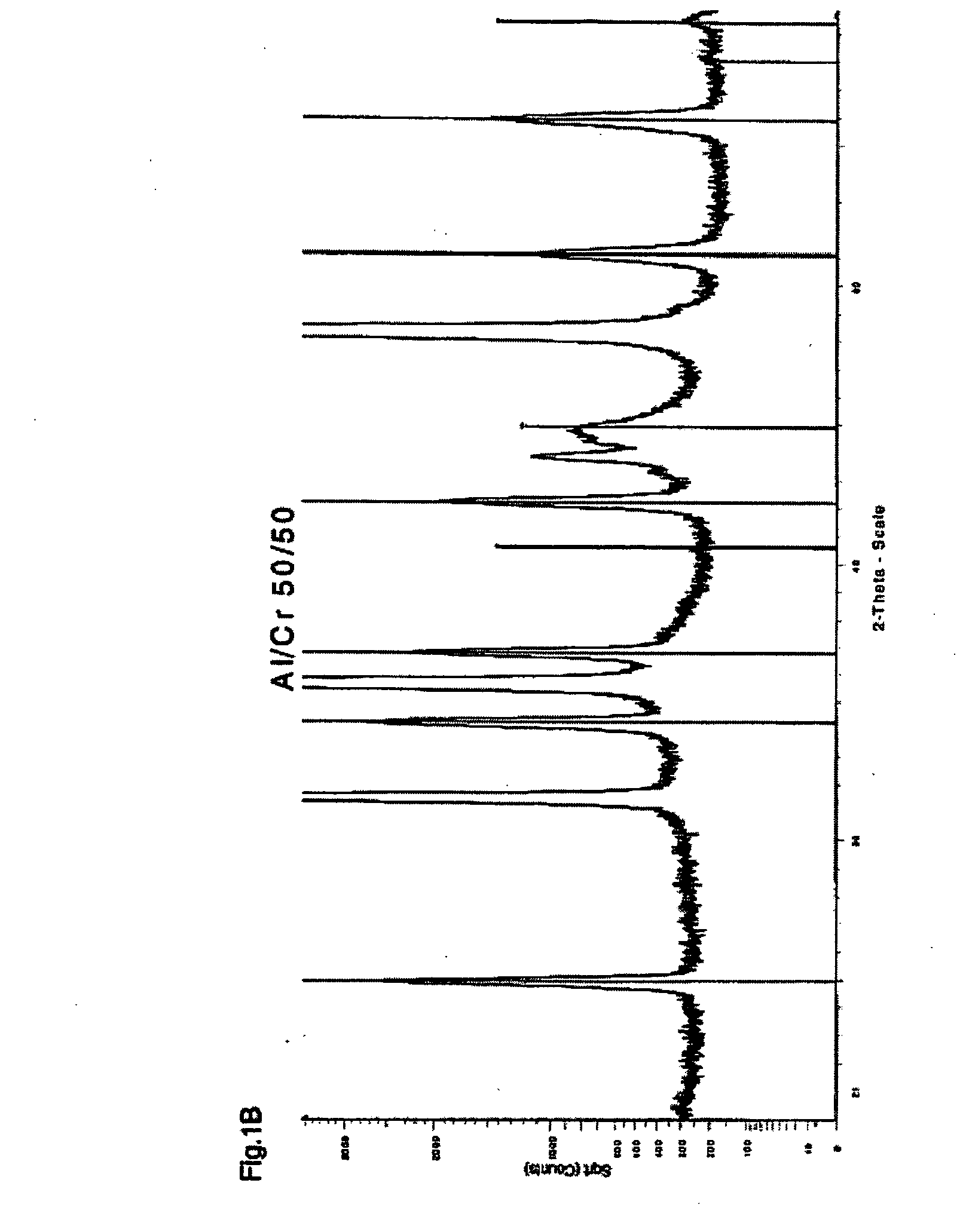Layer system with at least one mixed crystal layer of a multi-oxide
a multi-oxide and mixed crystal technology, applied in the field of multi-oxide layer system with at least one mixed crystal layer, can solve the problems of long coating time involved in producing these layers, coarse grain and thus excessive roughness, and failure to establish themselves as an industrial standard, etc., and achieves the effect of hardly practical industrial processes, and reducing the number of layers
- Summary
- Abstract
- Description
- Claims
- Application Information
AI Technical Summary
Benefits of technology
Problems solved by technology
Method used
Image
Examples
Embodiment Construction
AND FIGURES
[0052]The following will explain this invention with the aid of examples and with reference to the exemplary figures which illustrate the following:
[0053]FIG. 1 X-ray spectra of (Al1-xCrx)2O3 layers;
[0054]FIG. 2 Lattice parameters of (Al1-xCrx)2O3 layers;
[0055]FIG. 3 Temperature pattern of the lattice parameters;
[0056]FIG. 4 Oxidation pattern of a TiAlN layer;
[0057]FIG. 5 Oxidation pattern of a TiCN layer;
[0058]FIG. 6 Oxidation pattern of a TiCN / (Al1-xCrx)2O3 layer;
[0059]FIG. 7 Detail of a (Al1-xCrx)2O3 layer.
[0060]The example per test #1), described below in more detail, covers a complete coating cycle according to the invention, employing a weak, essentially vertical magnetic field in the area of the target surface.
[0061]The workpieces were placed in appropriately provided double- or triple-rotatable holders, the holders were positioned in the vacuum processing chamber, whereupon the vacuum chamber was pumped down to a pressure of about 10−4 mbar.
[0062]For generating th...
PUM
| Property | Measurement | Unit |
|---|---|---|
| temperature | aaaaa | aaaaa |
| temperature | aaaaa | aaaaa |
| crystallite size | aaaaa | aaaaa |
Abstract
Description
Claims
Application Information
 Login to View More
Login to View More - R&D
- Intellectual Property
- Life Sciences
- Materials
- Tech Scout
- Unparalleled Data Quality
- Higher Quality Content
- 60% Fewer Hallucinations
Browse by: Latest US Patents, China's latest patents, Technical Efficacy Thesaurus, Application Domain, Technology Topic, Popular Technical Reports.
© 2025 PatSnap. All rights reserved.Legal|Privacy policy|Modern Slavery Act Transparency Statement|Sitemap|About US| Contact US: help@patsnap.com



